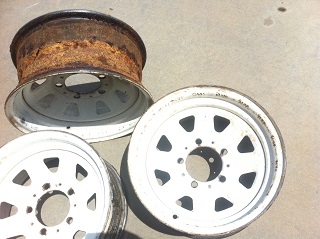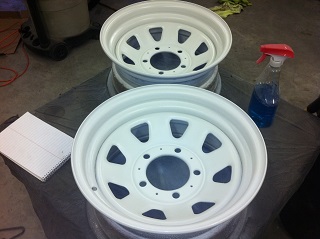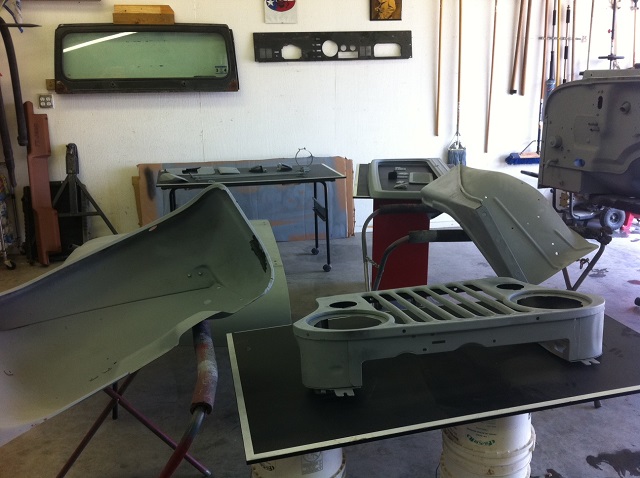| Project Jeep Part One: Acquisition and Breakdown |
| We were
driving through Weatherford, on our way home from "Trade Days," when a
CJ-5 parked in an old gas station caught my eye. I
turned around to investigate and saw that it was a 1983 model - the
last year for the CJ-5 - and it appeared to be in generally good
condition, except for the rust. Henry thought it was the
prettiest thing he'd ever seen, next
to his mother and his girlfriend, of course. I told him it
would take
a whole lot of time and effort to make it roadworthy, and
announced that my final decision was to forget about it. Lisa
suggested it would make a good father-son project. I said
no. She vetoed. Thus instructed, I bought it. It barely made it home. The engine acted as if it was about to fall out. We learned later that the engine was fine, but the transmission was about to fall out because three of the four bolts securing it to the engine were missing. Only the windshield wipers worked, but even they were useless because the rubber was gone. And boy was it rusty. |
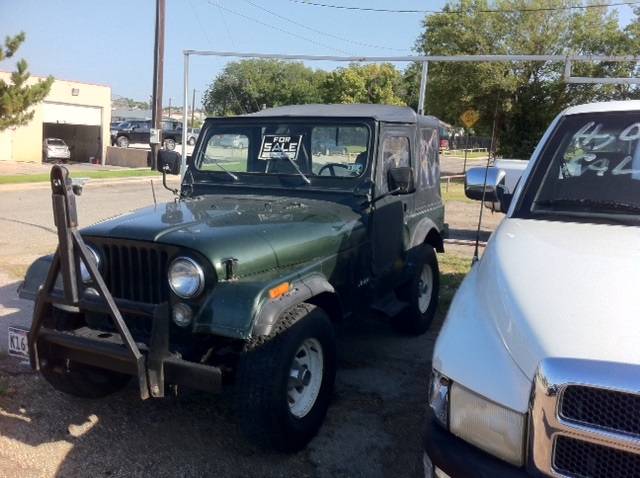
| Henry
wanted to drive it, of course, but since it would not idle properly and
since Henry has never driven a 4-speed and since it wasn't yet insured
and since it was 104º, we decided that wasn't a good idea. The plan was to remove the rotted-out fender flares, mirrors, and towbar, replace what we couldn't repair, and drive it. We got to work immediately, removing the top and the rotted-out fender flares. I soon came to realize something I should have known all along: Henry is really good at disassembling things. Next thing you know, we had the seats out, then the guages, then the headlights and taillights. We found rust on the floorboards, the fenders, throughout the firewall, on the wheels, and on the body, seatbelts, bumpers, mirrors, and dashboard. Even the glass was rusty! So we decided that we would repaint it. The original plan was to put on a fresh coat of Sherwood green metallic, which is the original color. |
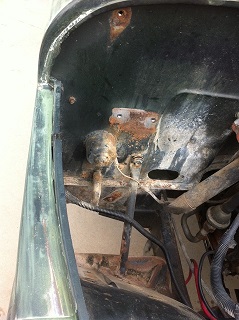
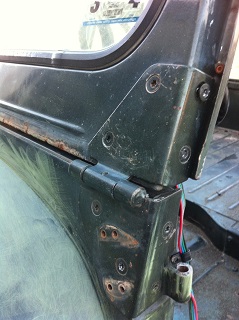
| We
had the Jeep at Casa G for less than an hour, and our plan went from "a
fresh coat of paint" to "minor restoration." Henry was having too
much fun taking parts off the Jeep. We decided to repaint the
engine bay as well, and in order to remove all the grime and rust, we
would have to remove the engine. But that would have been too easy. So we changed the game plan again by deciding against a minor restoration to a complete frame-off restoration. While Henry busied himself removing stuff, I tried to keep up putting all the parts into zip lock bags and labeling them. Notwithstanding such effort, we began putting unidentified bolts, parts, and other items into a separate bag labeled "leftover stuff." Eventually, this bag became two large boxes of who knows what. |
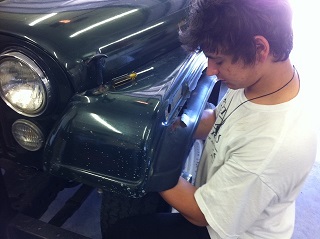
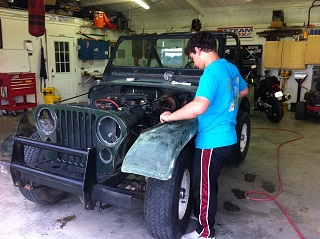
| The
windshield frame was very rusty, so it had to be replaced. That
meant replacement of all the gaskets and glass. The trouble was, the
hardware securing the post was rusted through, and after a day of
sweating and cussing, we simply drilled through the old
bolts. Then we noticed the grill was also rusty, but we were able to blast it into good shape. |
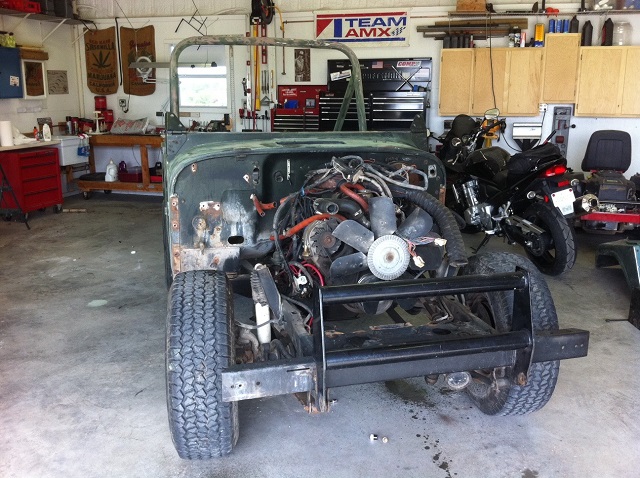
| The
good news: the 31 year-old paint was not too bad. The bad news: the paint was
not too bad because it was covered with rust. So we had no choice but
to
get a hundred fifty pounds of metal slag and a sandblaster.
Actually, we had many choices, but none sounded as fun as
sandblasting. The respirator made Henry look like a giant fly out
of a horror movie. I chose pink. He blasted the entire body (as
well as the jeep) and all the metal parts we could remove. All
the blasted parts were then prepped and primered. |
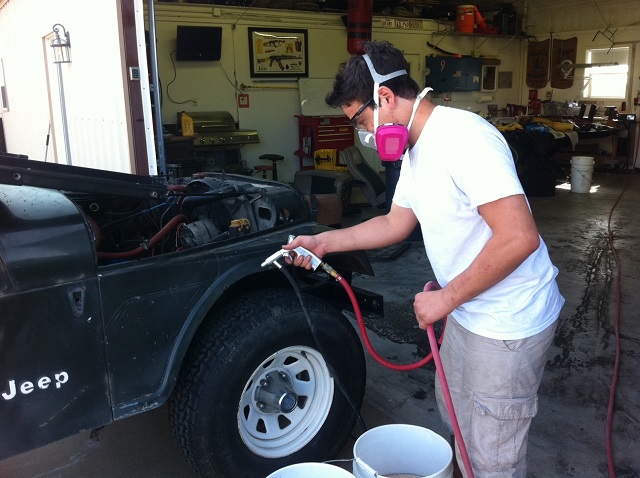
| Separating
the body from the frame was no easy task, as they are married by ten
rather difficult to access bolts. Eventually we broke the body
free from the frame and removed the worn out bushings. With the
assistance of neighbors we lifted the body off the
frame assembly. The frame-ectomy revealed an incredibly filthy engine and frame. It took more than a gallon of degreaser and several hours of pressurewashing with hot water to clean it. That's when we discovered that the transmission was hanging on for dear life. Three of the four bolts securing it to the engine were gone. No wonder it drove as if it was about to fall out. We prepped the frame by washing it and then painted it with a pint of glossy black enamel tractor paint purchased at Tractor Supply. The engine looked horrible. We removed the leaking valve cover, painted it the orginal AMC blue, which is actually Chrysler blue, and detailed the engine, replacing worn parts and sandblasting others before repainting them. With a small paintbrush and a steady hand, Lisa painted the rest of the engne AMC blue. Me and Henry didn't tell her she got paint on her face, so Lisa thought our smiles were out of admiration. |
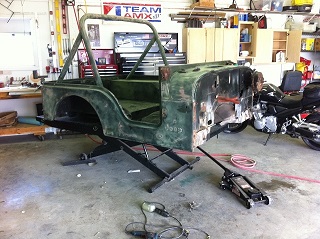
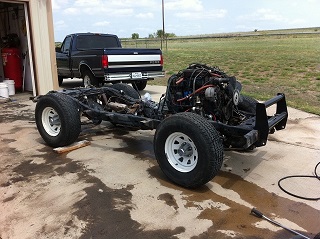
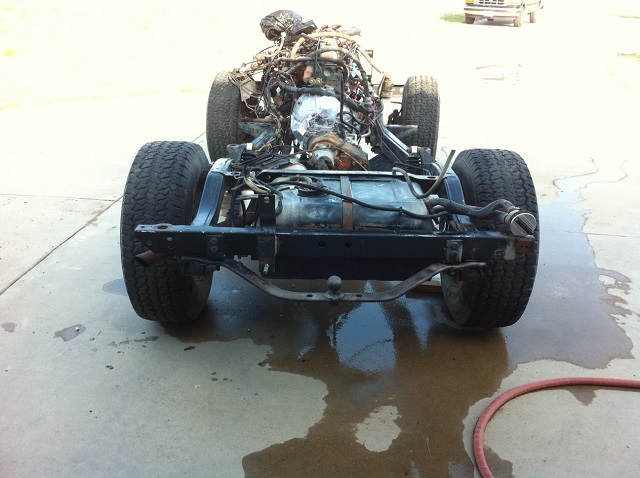
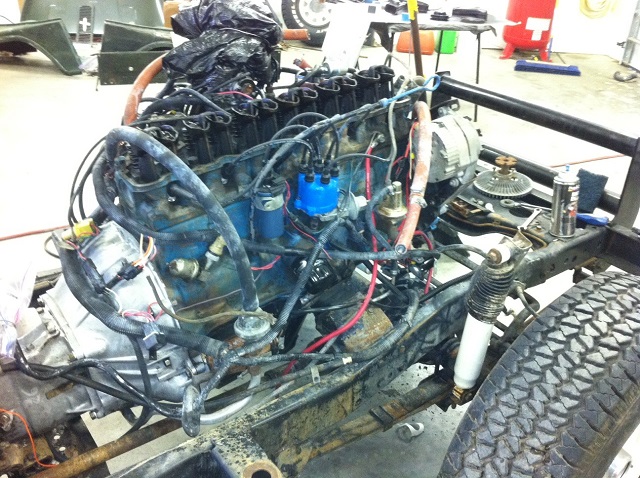
| The
wheels were rusty too. We wanted to retain the originals, so we
brought them to a friend with a tire shop to remove the tires.
That's when we learned the Jeep was riding on tires that were made in
1991. They were horribly dry rotted, so we replaced them with a
slightly larger tire with a more aggressive pattern. Since we had
to order the tires, we decided to return the wheels home and
clean them. It took a full day to sandblast, prime, paint, and
clearcoat the wheels. |
